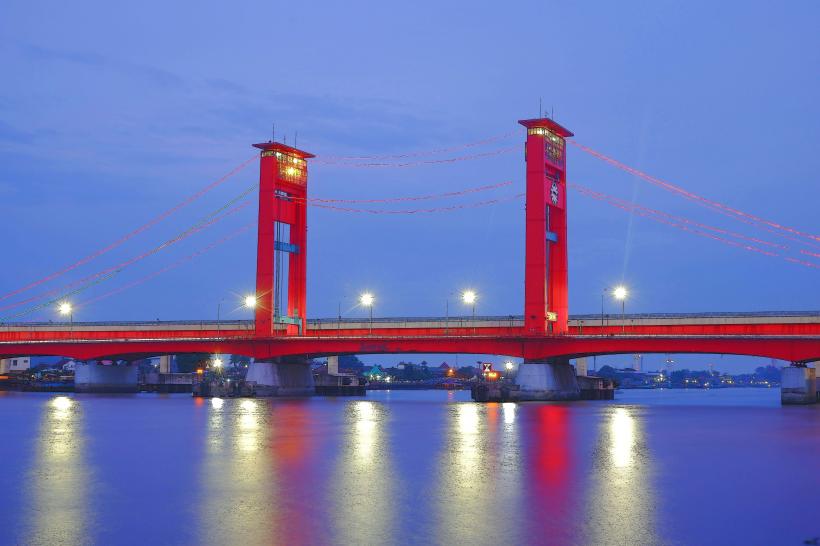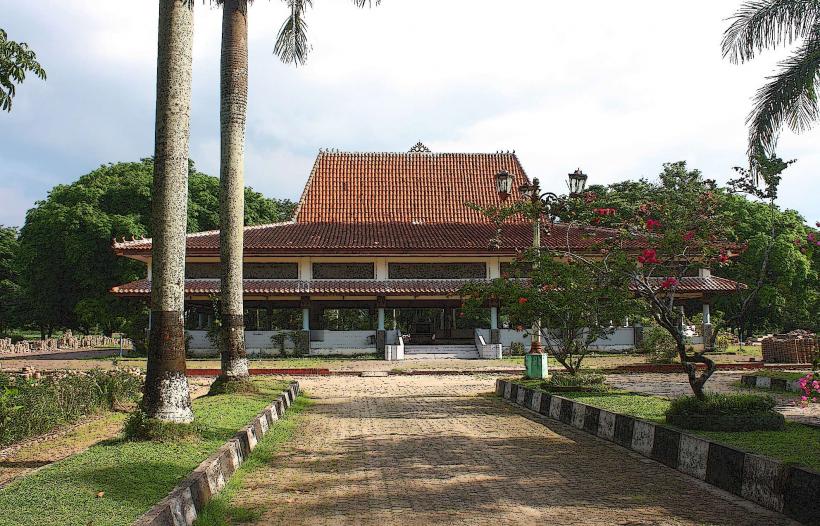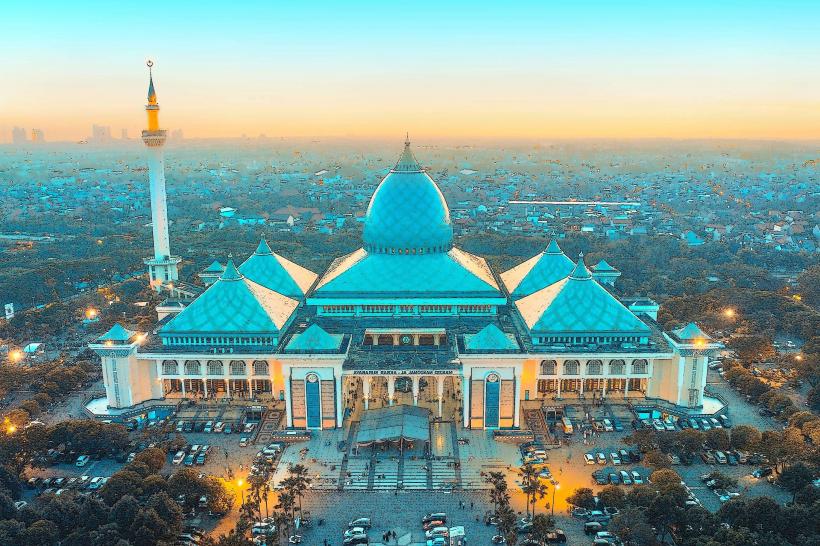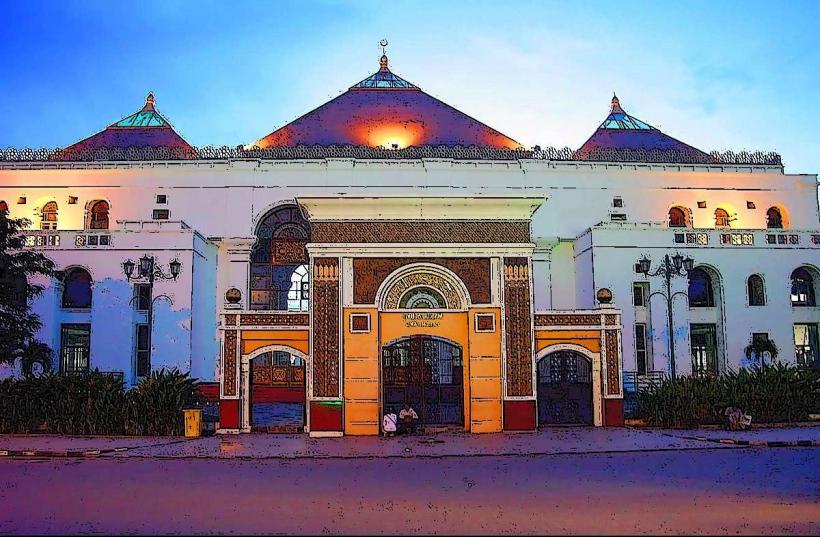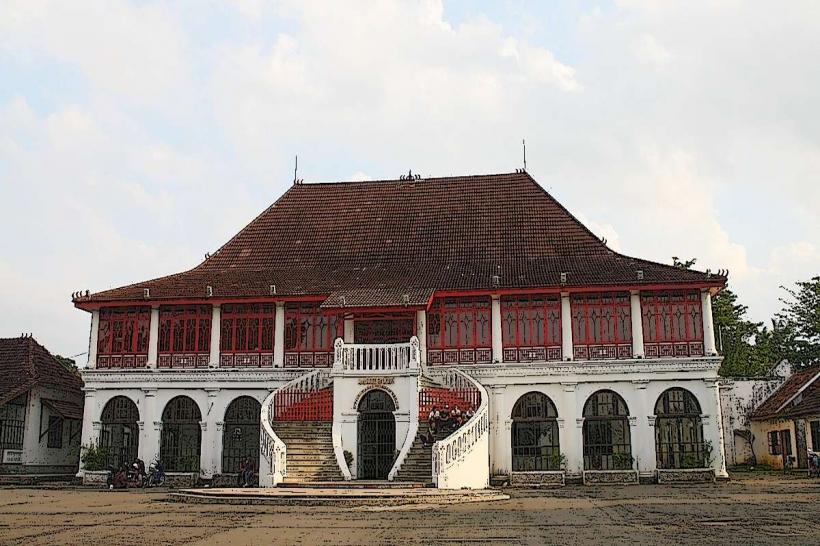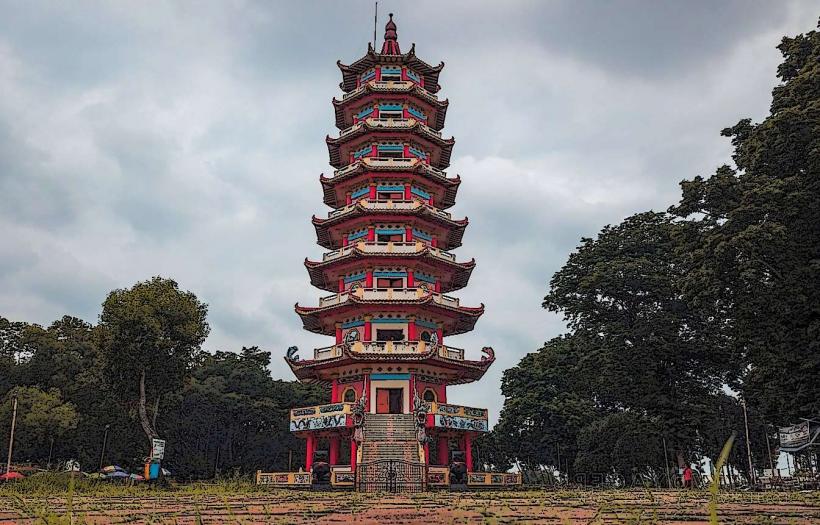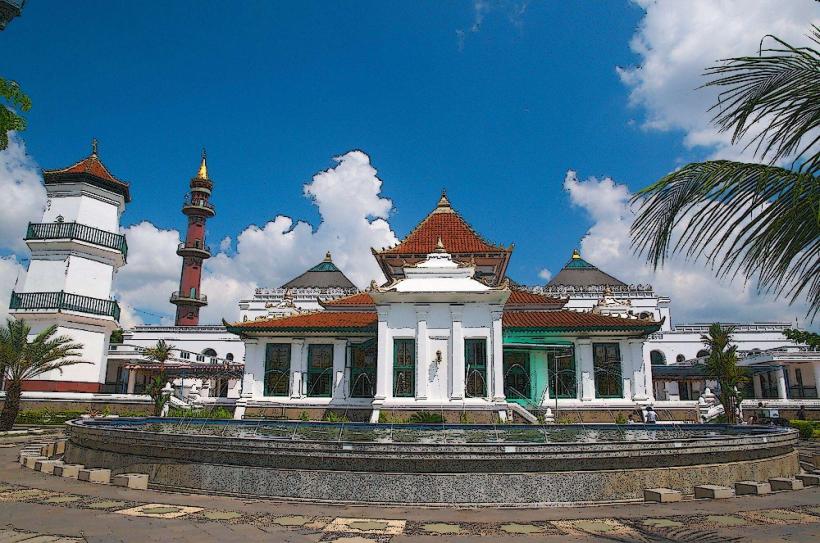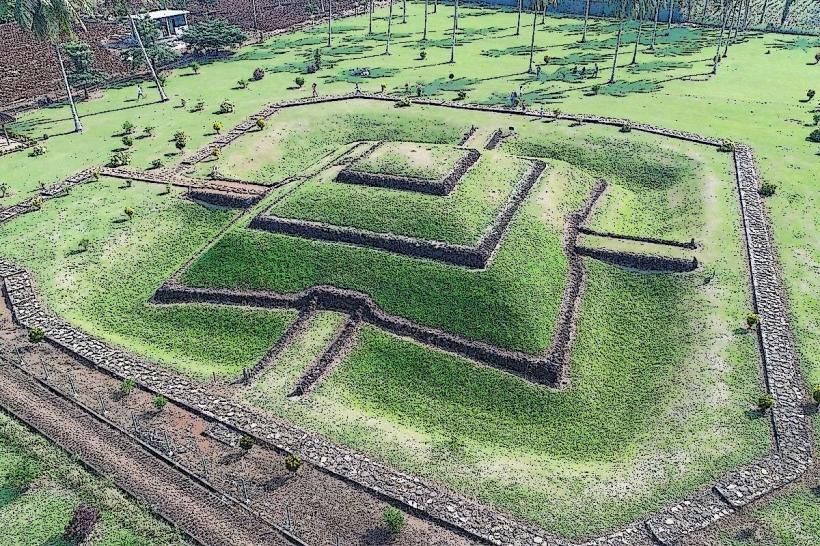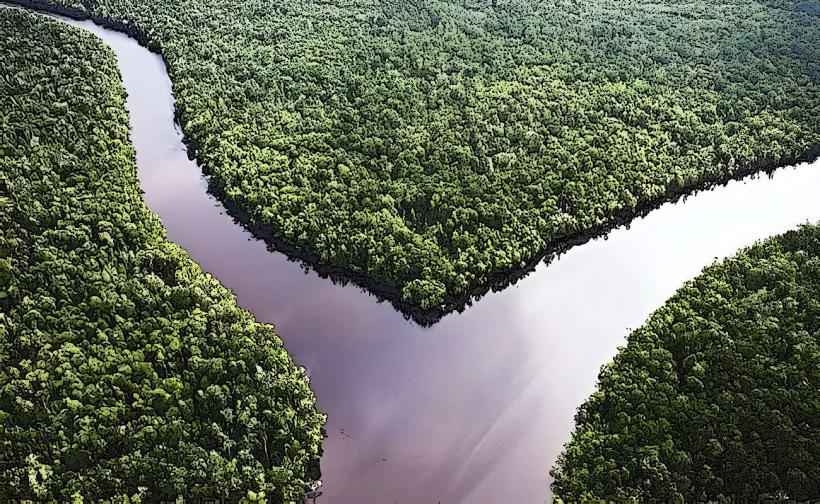Information
Landmark: Musi RiverCity: Palembang
Country: Indonesia
Continent: Asia
The Musi River is a major river that flows through Palembang, the capital city of South Sumatra, Indonesia. It is one of the longest rivers in Indonesia and plays a vital role in the region’s history, economy, and culture. The river is not only an important waterway for transportation but also a significant landmark in Palembang, shaping the city’s development over the centuries.
Key Details about the Musi River:
1. Geography and Origin
- Length: The Musi River is approximately 750 kilometers (466 miles) long, making it one of the longest rivers in Indonesia.
- Source: The river originates from the Bukit Barisan mountain range, located in the southern part of Sumatra, flowing through various districts in South Sumatra before reaching Palembang.
- Mouth: The Musi River empties into the Bengkulu Strait of the Indian Ocean, creating a wide delta region near Palembang.
- Course: The river flows predominantly northward and passes through Palembang before continuing to its mouth. The river is divided into several branches in the city, creating a network of waterways that contribute to Palembang’s layout and function.
2. Historical Importance
- Ancient Civilizations: The Musi River has been central to the development of Palembang and the Srivijaya Empire (7th to 13th century), a powerful maritime empire that dominated much of Southeast Asia. The Srivijaya Empire used the river for trade, transportation, and cultural exchange.
- The river served as a critical trade route for the spice trade, gold, and other goods, making Palembang a significant center of commerce in the region during this period.
- Colonial Era: During the Dutch colonial period, the Musi River continued to play a vital role in the transportation of goods and resources. The river helped establish Palembang as an important colonial port.
- Today, the Musi River is still an integral part of the city’s economy, culture, and daily life.
3. Economic and Transport Role
- Waterway: The Musi River is an important transportation route for both cargo ships and passenger boats. Historically, it facilitated the movement of goods, including timber, rubber, and minerals, to the port of Palembang and beyond.
- Ferries and Boats: In Palembang, small boats, ferries, and water taxis are commonly used to cross the river or travel between districts. These boats serve as a significant form of local transportation for both goods and people.
- Fishing: The river is also an important source of fishing. Local fishermen rely on the Musi River for their livelihood, catching various types of fish that contribute to both local consumption and the regional economy.
4. Cultural Significance
- Cultural Hub: The Musi River has played a central role in the cultural development of Palembang. It has been a lifeline for the city for centuries, shaping its identity, and influencing the architecture, traditions, and lifestyle of the people.
- Riverside Communities: Many of the city’s traditional communities live along the Musi River, and their wooden houses on stilts can be seen lining the riverbanks. These communities have long been reliant on the river for their livelihoods, including fishing and agriculture.
- Festivals: The river also plays a role in several cultural and religious events. For example, the Musi Festival celebrates the cultural heritage of Palembang and includes traditional boat races, music, and dances along the river.
- Traditional Boats: The river is known for its traditional wooden boats, which are still used for daily transportation, fishing, and as part of local rituals. These boats have cultural significance, as they represent the lifestyle and heritage of Palembang’s riverside communities.
5. Notable Landmarks Along the Musi River
- Ampera Bridge: The Ampera Bridge is one of the most iconic landmarks in Palembang, spanning the Musi River. This historic bridge is a symbol of the city and provides spectacular views of the river, particularly at night when the bridge is illuminated.
- Kuto Besak Fort: Situated near the Musi River, the Kuto Besak Fort is a historical landmark from the 17th century. It was once the seat of the Palembang Sultanate and offers views of the river and the city.
- Taman Siring: This riverside park in Palembang is a popular recreational area that provides visitors with a scenic view of the Musi River, especially at sunset. It’s a spot for relaxation, walking, and enjoying the river’s ambiance.
- Palembang Floating Market: Another notable attraction near the Musi River is the Palembang Floating Market, where vendors sell traditional goods from boats along the river. This market represents Palembang's deep connection to the river as a central commercial space.
6. Environmental Impact
- Pollution: Like many rivers in urban areas, the Musi River faces challenges related to pollution, especially from industrial and domestic waste. Efforts have been made to clean up the river, though the ongoing industrial development in the area continues to present environmental concerns.
- Flooding: The Musi River is prone to seasonal flooding during the rainy season, which can impact the surrounding communities and infrastructure. Flood control and river management are important issues for the local government.
7. Tourism and Recreation
- Boat Tours: Tourists often enjoy taking boat tours along the Musi River, which offer an opportunity to explore Palembang from the water. These tours provide unique views of the city’s landmarks, including the Ampera Bridge, traditional houses, and local life along the riverbanks.
- Riverfront Walks: The Taman Siring area along the riverfront is a popular place for both locals and tourists to take leisurely walks, enjoy the scenery, and relax by the river. It offers a peaceful setting with views of the Musi River’s flowing waters and the city skyline.
- Photography: The Musi River offers excellent opportunities for photography, especially with the Ampera Bridge in the background. The interplay of light during the day and night, as well as the river's scenic beauty, make it a favorite spot for photographers.
8. Flora and Fauna
- The Musi River is home to a variety of aquatic life, including fish species that are important for local fishing activities. While the river’s biodiversity has been affected by urbanization and pollution, efforts are underway to protect its ecosystem and restore its health.
- The riverbanks and surrounding wetlands provide habitats for various species of birds and wildlife, contributing to the local biodiversity.
9. Best Time to Visit
- The best time to visit the Musi River is during the dry season (from May to September), when the weather is more favorable for boat tours and outdoor activities. During the rainy season, the river can swell and cause flooding, which may limit access to some areas along the river.
10. Conclusion
The Musi River is an essential feature of Palembang, serving as a historical, cultural, and economic lifeline for the city. From its significance in the ancient Srivijaya Empire to its role in modern-day Palembang as a transportation route and symbol of local life, the river has been central to the city’s identity. Whether you’re exploring the city’s landmarks, enjoying a boat ride, or learning about its history, the Musi River offers a unique and memorable experience that connects visitors to the heart of Palembang.

